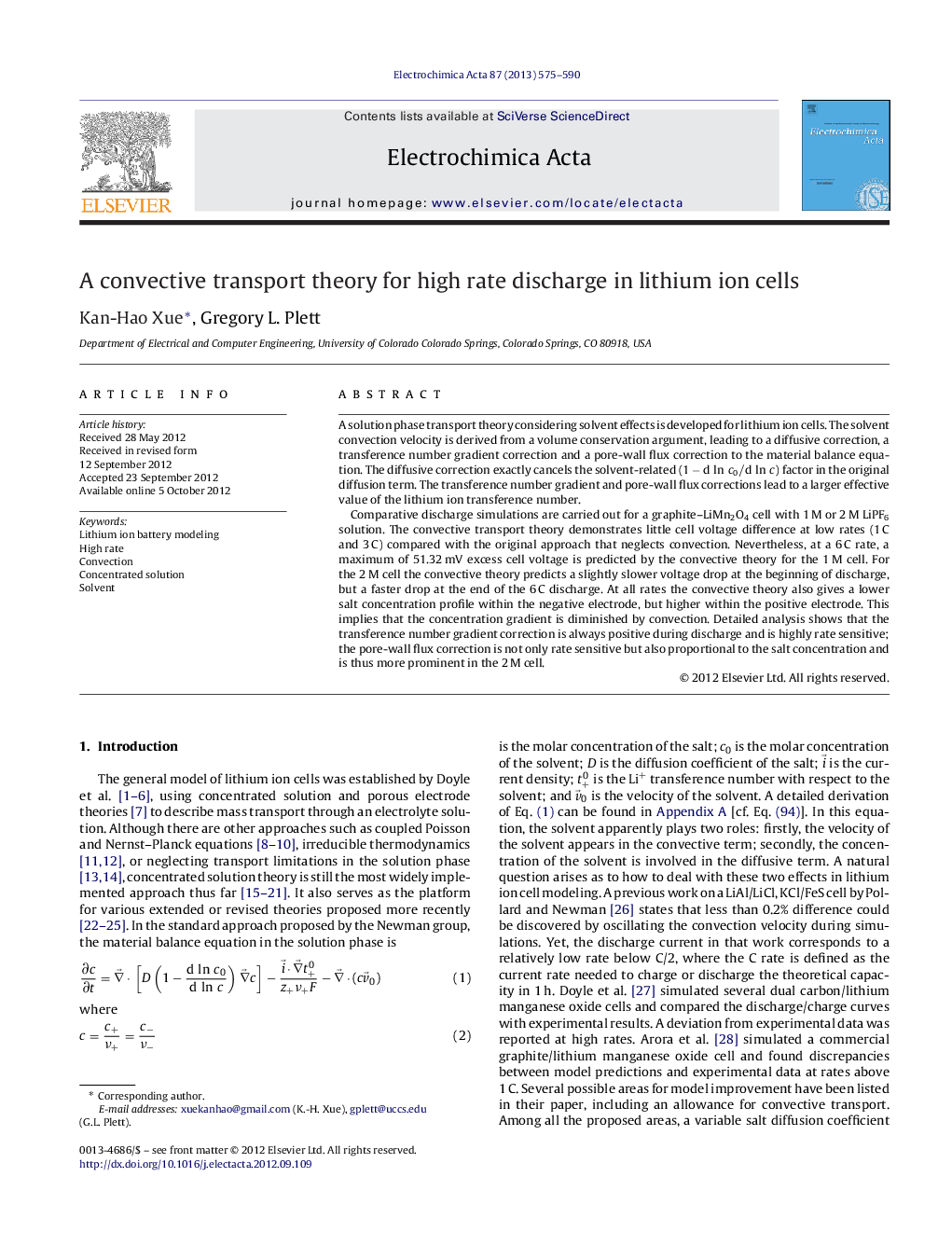| Article ID | Journal | Published Year | Pages | File Type |
|---|---|---|---|---|
| 188027 | Electrochimica Acta | 2013 | 16 Pages |
A solution phase transport theory considering solvent effects is developed for lithium ion cells. The solvent convection velocity is derived from a volume conservation argument, leading to a diffusive correction, a transference number gradient correction and a pore-wall flux correction to the material balance equation. The diffusive correction exactly cancels the solvent-related (1−dlnc0/dlnc) factor in the original diffusion term. The transference number gradient and pore-wall flux corrections lead to a larger effective value of the lithium ion transference number.Comparative discharge simulations are carried out for a graphite–LiMn2O4LiMn2O4 cell with 1 M or 2 M LiPF6LiPF6 solution. The convective transport theory demonstrates little cell voltage difference at low rates (1 C and 3 C) compared with the original approach that neglects convection. Nevertheless, at a 6 C rate, a maximum of 51.32 mV excess cell voltage is predicted by the convective theory for the 1 M cell. For the 2 M cell the convective theory predicts a slightly slower voltage drop at the beginning of discharge, but a faster drop at the end of the 6 C discharge. At all rates the convective theory also gives a lower salt concentration profile within the negative electrode, but higher within the positive electrode. This implies that the concentration gradient is diminished by convection. Detailed analysis shows that the transference number gradient correction is always positive during discharge and is highly rate sensitive; the pore-wall flux correction is not only rate sensitive but also proportional to the salt concentration and is thus more prominent in the 2 M cell.
